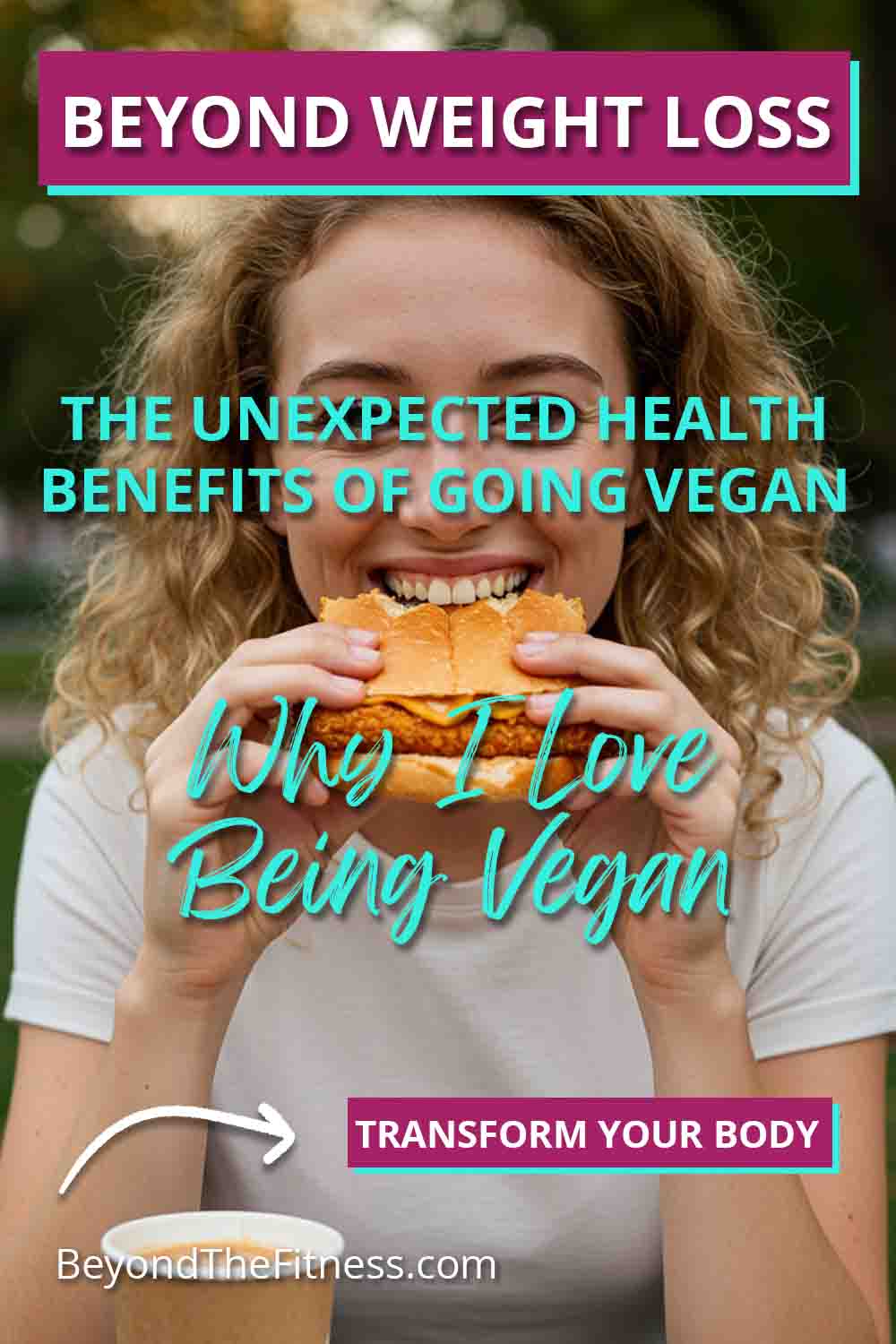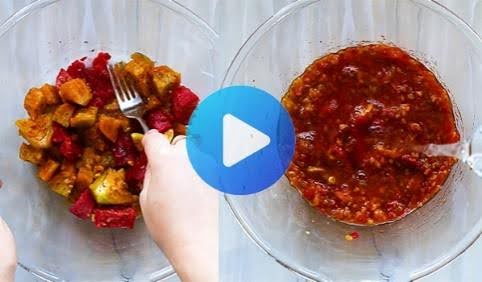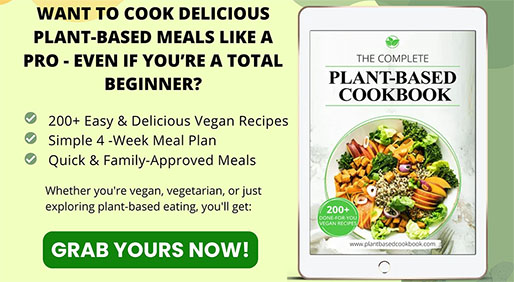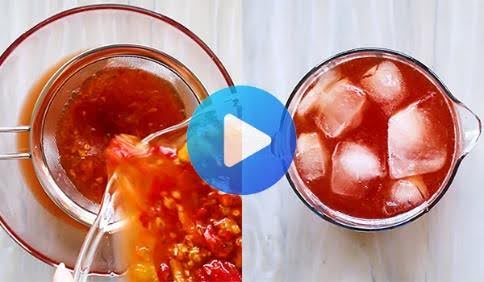Many people think about going vegan for reasons like helping animals or the planet. Those are great reasons. But I want to talk about something else today. I want to share some surprising ways eating only plants can make your body feel really good. As someone who has spent a lot of time learning about how food affects our fitness and weight, especially for women, I have seen some amazing changes in people who try a vegan way of eating.
What Does Going Vegan Mean Anyway?
Before we jump into the good stuff, let’s be clear on what “going vegan” means. It is about eating only foods that come from plants. This includes fruits, vegetables, nuts, seeds, grains like oats and rice, and beans and lentils. Vegans do not eat meat, chicken, fish, eggs, or dairy products like milk and cheese. They also do not eat honey because it comes from bees. It might sound like a lot to give up, but there are so many tasty plant foods to discover.
Unexpected Ways Your Health Might Get a Boost
When you switch to eating only plants, your body might surprise you with how good it feels. It is not just about what you stop eating, but also about all the wonderful nutrients you start putting into your body.
1. Hello, Healthy Weight
This is a big one for many people. Eating a vegan diet can be really helpful for getting to a healthy weight and staying there. Plant foods, like vegetables and fruits, are often lower in calories than animal foods. Think about a big salad with lots of colorful veggies versus a small piece of cheese. The salad can fill you up more with fewer calories.
Plant foods are also usually packed with fiber. Fiber is like a superhero for your tummy. It helps you feel full, so you might not feel like eating too much. This can make it easier to manage your weight without feeling hungry all the time. For women, maintaining a healthy weight is important for many reasons, including energy levels and keeping our hearts strong. A diet full of plants can support this in a gentle way. It is not about super strict rules, but about filling your plate with good, wholesome foods.
2. Your Tummy Will Thank You
Speaking of fiber, it does more than just help you feel full. Fiber is super important for keeping your digestive system running smoothly. Think of it like a broom that sweeps everything through your body. When you eat a lot of plant foods, you are getting a lot of fiber. This can help prevent problems like constipation and keep your bathroom visits regular and comfortable.
Insider Tip: Enjoying Healthy and Flavorful Plant-Based Dishes with The Complete Plant Based Recipe Cookbook
A happy tummy means you absorb more nutrients from your food too. When your digestion is working well, your body can take in all the good vitamins and minerals from the plants you are eating. This is great news for your overall health.
3. Glowing Skin Secrets
Have you ever noticed how some people just seem to have that healthy glow? What you eat can play a big part in how your skin looks. Many people find that when they go vegan, their skin starts to look clearer and brighter.
Why does this happen? Well, dairy products are linked to acne for some people. When you stop eating dairy, you might see fewer breakouts. Also, vegan diets are often full of fruits and vegetables, which are loaded with antioxidants. Antioxidants are like little bodyguards that protect your skin cells from damage. They can help your skin look fresh and youthful. Plus, all the water in fruits and veggies helps keep your skin hydrated from the inside out.
4. More Pep in Your Step
Feeling tired a lot? Your food choices might be part of the reason. Animal products can sometimes be heavy and take a lot of energy for your body to digest. When you switch to a diet based on plants, you might find you have more energy.
Plant foods are often easier for your body to break down. They are also full of nutrients that help your body make energy, like B vitamins and iron (we will talk more about getting enough iron later). When your body is not working so hard to digest heavy meals, and it is getting lots of good fuel, you can feel lighter and more energetic throughout the day. This is especially great for busy women who need to keep going.
5. A Happier Heart
Heart disease is a serious concern, especially as we get older. The good news is that a vegan diet can be very heart-friendly. Animal products, especially red and processed meats, can be high in saturated fat and cholesterol. Too much of these can lead to clogged arteries, which is not good for your heart.
Plant foods, on the other hand, are naturally cholesterol-free. They are also generally low in saturated fat. Many plant foods, like oats, beans, and nuts, contain substances that can actually help lower bad cholesterol levels. Plus, the high fiber content helps keep blood pressure in a healthy range. Taking care of your heart is one of the best gifts you can give yourself.
6. Lowering Risks for Other Health Worries
Eating a vegan diet has also been linked to a lower risk of other health problems. For example, studies have shown that people who eat plant-based diets may have a lower chance of getting type 2 diabetes. This is likely because vegan diets can help with weight management and improve how your body uses sugar.
Some research also suggests that eating lots of fruits and vegetables might help protect against certain types of cancer. Plants are full of protective compounds that can help keep your cells healthy. While no diet is a magic bullet, filling your plate with plants is a smart move for long-term health.
7. Supporting Your Body’s Natural Rhythms (Especially for Women)
Our bodies, especially women’s bodies, have natural cycles and rhythms. What we eat can influence these. While a vegan diet is not a cure-all for hormonal issues, focusing on whole, unprocessed plant foods can be very supportive. These foods are rich in fiber, which helps your body get rid of waste, including excess hormones.
Also, by avoiding processed foods and animal products that might contain added hormones, you are giving your body a cleaner slate. Many women find that eating a balanced vegan diet helps them feel more balanced overall. It is about giving your body the good building blocks it needs to function at its best.
8. Catching More Zzz’s
If you struggle with sleep, your diet could be playing a role. Heavy meals close to bedtime can make it hard to fall asleep or stay asleep. Plant-based meals are often lighter and easier to digest. This means your body can focus on resting and repairing at night, rather than working hard on digestion.
Also, some plant foods contain nutrients that can promote good sleep. For example, foods like oats, bananas, and nuts contain magnesium and tryptophan, which can help you relax and get ready for bed.
9. Cooling Down Inflammation
Inflammation is your body’s natural response to injury or infection. But when inflammation sticks around for too long (chronic inflammation), it can contribute to many health problems, like arthritis, heart disease, and more.
Many plant foods are packed with anti-inflammatory compounds. Think of colorful fruits and vegetables, nuts, seeds, and spices like turmeric and ginger. By eating a diet rich in these foods, you can help your body fight off unnecessary inflammation. This can lead to feeling better overall, with less pain and stiffness.
Making Sure You Get All the Good Stuff: Vegan Nutrition Basics
When you decide to eat only plants, it is important to make sure you are still getting all the nutrients your body needs to thrive. It is totally doable, but it takes a little bit of planning. Here are some key nutrients to pay attention to:
Protein: Not Just from Meat
Many people worry about getting enough protein on a vegan diet. But plants have protein too. Good sources include:
- Beans (black beans, kidney beans, chickpeas)
- Lentils (red, green, brown)
- Tofu and tempeh (made from soybeans)
- Quinoa (a grain that is a complete protein)
- Nuts and seeds (almonds, peanuts, pumpkin seeds, chia seeds)
- Whole wheat bread and pasta
- Oats
- Even vegetables like broccoli and spinach have some protein.
Aim to include a source of protein with each meal. For example, you could have oatmeal with nuts for breakfast, a lentil soup for lunch, and tofu stir-fry for dinner.
Iron: Important for Energy, Especially for Women
Iron helps carry oxygen around your body. If you do not get enough, you can feel tired and weak. Women need more iron than men, especially during their childbearing years.
Plant-based iron is a little different from the iron in meat, and your body does not absorb it quite as easily. But you can boost absorption by eating iron-rich foods with vitamin C. Good plant sources of iron include:
- Lentils and beans
- Tofu
- Spinach and other leafy greens
- Fortified breakfast cereals
- Pumpkin seeds
- Dried apricots and raisins
Try having a glass of orange juice (vitamin C) with your iron-fortified cereal, or add bell peppers (vitamin C) to your bean chili.
Calcium: For Strong Bones
Calcium is key for healthy bones and teeth. Dairy is a well-known source, but there are plenty of plant-based options:
- Fortified plant milks (soy, almond, oat – check the label)
- Fortified orange juice
- Tofu made with calcium sulfate
- Leafy green vegetables like kale, collard greens, and bok choy
- Almonds and almond butter
- Sesame seeds and tahini
Vitamin B12: The One You Really Need to Watch
Vitamin B12 is super important for your nerves and blood cells. It is mostly found in animal products. This means that if you are vegan, you need to find a reliable source of B12. This usually means:
- Taking a B12 supplement
- Eating foods fortified with B12 (like some plant milks, breakfast cereals, and nutritional yeast)
Do not skip this. A B12 deficiency can cause serious problems, so make sure you are getting enough. It is easy to do with a supplement or fortified foods.
Omega-3 Fatty Acids: Good Fats for Your Brain and Heart
Omega-3s are healthy fats that are important for brain health, heart health, and reducing inflammation. Fish is a common source, but you can get plant-based omega-3s (called ALA) from:
- Flaxseeds (ground or oil)
- Chia seeds
- Walnuts
- Hemp seeds
- Soybeans and tofu
Your body can convert some ALA into the other types of omega-3s (EPA and DHA), but the conversion is not always very efficient. Some people choose to take an algae-based DHA/EPA supplement to be sure.
Vitamin D: The Sunshine Vitamin
Vitamin D works with calcium to keep your bones strong. Your body can make vitamin D when your skin is exposed to sunlight. But depending on where you live, the time of year, and your skin tone, you might not make enough.
Food sources of vitamin D for vegans include:
- Fortified plant milks
- Fortified orange juice
- Fortified breakfast cereals
- Some mushrooms (if they have been exposed to UV light)
Many people, vegan or not, benefit from a vitamin D supplement, especially in the winter months.
Zinc: For a Healthy Immune System
Zinc helps your immune system work properly and helps with healing. Good plant sources include:
- Beans and lentils
- Tofu
- Nuts (cashews, almonds) and seeds (pumpkin, hemp)
- Oats
- Whole grains
- Fortified cereals
Soaking beans and grains before cooking can help improve zinc absorption.
Iodine: Important for Your Thyroid
Iodine is needed for your thyroid gland to work right. Your thyroid controls your metabolism. The easiest way to get iodine is to use iodized salt. Sea vegetables like nori (seaweed) are also good sources, but their iodine content can vary a lot, so do not rely on them as your only source. Some plant milks are also fortified with iodine.
Making the Switch: Tips for Going Vegan Smoothly
Thinking about trying a vegan diet? It does not have to be all or nothing right away. Here are some tips to make the change easier:
- Start Slow: You do not have to become vegan overnight. Try “Meatless Mondays,” where you eat vegan one day a week. Or maybe try eating vegan for breakfast and lunch, and have your usual dinner. Small steps can lead to big changes.
- Focus on Adding, Not Just Taking Away: Instead of thinking about all the foods you “cannot” eat, focus on all the exciting new plant foods you can try. Explore different fruits, vegetables, grains, and beans.
- Explore New Recipes and Cuisines: There are so many delicious vegan recipes out there. Look online, get a vegan cookbook, or try vegan options at restaurants. Indian, Thai, and Mexican cuisines often have lots of tasty plant-based dishes.
- Read Food Labels: You might be surprised where animal products can hide (like whey in some chips, or gelatin in some candies). Get in the habit of checking ingredient lists.
- Find Your Tribe: Connect with other people who are vegan or interested in plant-based eating. There are many online groups and local meetups. Having support can make the journey more fun.
- Do Not Aim for Perfection, Especially at First: If you slip up and eat something that is not vegan, it is okay. Do not beat yourself up. Just get back on track with your next meal. It is a learning process.
- Plan Your Meals: A little bit of planning can go a long way, especially when you are starting out. Think about what you will eat for meals and snacks during the week. This helps ensure you have healthy options on hand and are getting a good variety of nutrients.
Veganism and Your Workouts
As someone who loves exercise, I know how important food is for fueling workouts and helping muscles recover. Can you be strong and fit on a vegan diet? Absolutely. Many successful athletes are vegan.
Plants provide excellent carbohydrates, which are your body’s main source of energy for workouts. Think oats, brown rice, quinoa, sweet potatoes, and fruits. These give you the power to push through your exercise routine.
And what about protein for muscle repair and growth? As we talked about, there are plenty of plant-based protein sources. Eating enough protein throughout the day will help your muscles recover and get stronger after exercise.
Plus, many plant foods are rich in antioxidants. Exercise can create some stress in the body, and antioxidants help protect your cells from damage and can aid in recovery. So, a colorful, plant-rich diet can actually support your fitness goals.
Tackling Common Worries
It is normal to have questions or concerns when thinking about a big dietary change. Let’s address a few common ones:
- “Is eating vegan expensive?” It can be, if you buy a lot of specialty vegan products like mock meats and cheeses. But a vegan diet based on whole foods like beans, lentils, rice, oats, and seasonal fruits and vegetables can actually be very budget-friendly. Buying in bulk and cooking at home can save you a lot of money.
- “Will it be hard to eat out at restaurants?” It is getting easier all the time. Many restaurants now have vegan options clearly marked on their menus. Do not be afraid to ask your server for suggestions or modifications. A little planning ahead by checking menus online can also help.
- “Will I really get all the nutrients I need?” Yes, with a little planning and awareness, you can absolutely get all the nutrients your body needs on a vegan diet. The key is to eat a wide variety of whole plant foods and pay attention to those key nutrients we discussed earlier, especially B12.
Delicious and Easy Vegan Recipes to Get You Started
To show you how tasty and simple vegan eating can be, here are a few of my favorite easy recipes.
1. Super Speedy Overnight Oats
This is perfect for busy mornings. Prepare it the night before, and breakfast is ready when you wake up.
What you need:
- 1/2 cup rolled oats (not instant)
- 1 cup plant milk (almond, soy, or oat work well)
- 1 tablespoon chia seeds
- 1 tablespoon maple syrup or agave (optional, for sweetness)
- 1/2 cup mixed berries (fresh or frozen)
- A sprinkle of nuts or seeds (like almonds or pumpkin seeds)
What to do:
- In a jar or container with a lid, mix together the oats, plant milk, chia seeds, and maple syrup (if using).
- Stir well to make sure everything is combined.
- Cover and put it in the fridge overnight, or for at least 4 hours.
- In the morning, give it a stir. If it is too thick, add a little more plant milk.
- Top with your berries and a sprinkle of nuts or seeds. Enjoy.
2. Quick Chickpea Salad Sandwich or Wrap
This is a great alternative to tuna or chicken salad. It is full of protein and flavor.
What you need:
- 1 can (15 ounces) chickpeas, rinsed and drained
- 1/4 cup vegan mayonnaise
- 1 celery stalk, finely chopped
- 2 tablespoons red onion, finely chopped (optional)
- 1 tablespoon Dijon mustard
- 1 tablespoon lemon juice
- Salt and pepper to taste
- Whole wheat bread, pita bread, or lettuce wraps
- Your favorite sandwich toppings (lettuce, tomato, sprouts)
What to do:
- In a medium bowl, mash the chickpeas with a fork or potato masher. You want some texture, so do not make it completely smooth.
- Add the vegan mayonnaise, chopped celery, red onion (if using), Dijon mustard, and lemon juice.
- Stir everything together until well combined.
- Taste and add salt and pepper as needed.
- Serve on bread or in a pita like a sandwich, or use large lettuce leaves for a lighter wrap. Add your favorite toppings.
3. Easy One-Pan Roasted Veggies and Tofu
This makes for a simple and satisfying dinner with minimal cleanup.
What you need:
- 1 block (14-16 ounces) firm or extra-firm tofu, pressed and cut into 1-inch cubes
- 1 large broccoli head, cut into florets
- 2 carrots, peeled and sliced
- 1 red bell pepper, cut into chunks
- 1 small red onion, cut into wedges
- 2 tablespoons olive oil or avocado oil
- 1 tablespoon soy sauce or tamari
- 1 teaspoon garlic powder
- 1/2 teaspoon dried oregano (or other herbs you like)
- Salt and pepper to taste
- Cooked quinoa or brown rice for serving (optional)
What to do:
You Might Be Interested In: Exploring Delicious Vegan Recipes With This Cookbook
- Preheat your oven to 400°F (200°C). Line a large baking sheet with parchment paper.
- In a large bowl, gently toss the tofu cubes and all the chopped vegetables with the olive oil, soy sauce, garlic powder, oregano, salt, and pepper. Make sure everything is lightly coated.
- Spread the tofu and vegetables in a single layer on the prepared baking sheet.
- Roast for 25-35 minutes, flipping everything halfway through, until the vegetables are tender and slightly browned, and the tofu is golden.
- Serve hot, on its own or over a bed of cooked quinoa or brown rice.
4. Simple Hummus and Veggie Sticks
A classic healthy snack that is always a winner.
What you need:
- Your favorite store-bought hummus (or homemade)
- Assorted raw vegetables, cut into sticks (carrots, celery, bell peppers, cucumbers, snap peas)
- Whole wheat pita bread, cut into triangles (optional)
What to do:
- Arrange the veggie sticks and pita triangles (if using) on a plate.
- Put a scoop of hummus in a small bowl for dipping.
- Dip and enjoy. It is that easy.
Eating vegan does not mean missing out on delicious food. It is an adventure in discovering new flavors and creative ways to cook with plants. These recipes are just a starting point. There is a whole world of vegan cooking to explore.
Final Thoughts
Exploring a vegan way of eating can open up a surprising number of health benefits, from easier weight management and better digestion to glowing skin and a happier heart. For women, the focus on whole, nutrient-dense foods can be particularly supportive for overall well-being and energy levels. Remember, it is not about perfection, but about making positive choices that nourish your body. Taking it one step at a time, listening to your body, and ensuring you are getting key nutrients like B12 will set you up for success on your plant-based journey. It is a path that can lead to feeling really good, inside and out.







